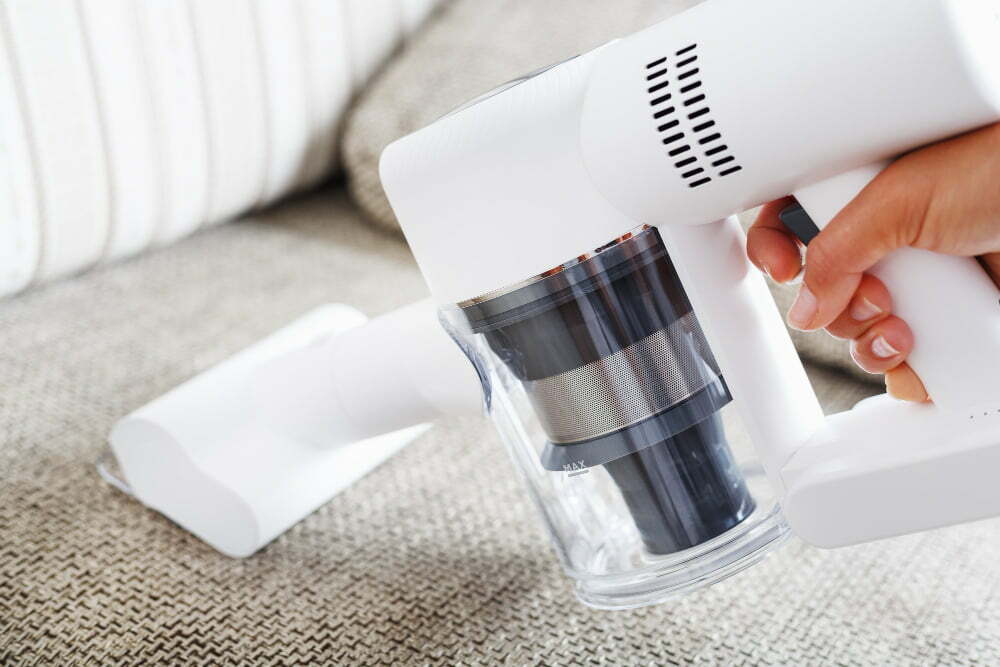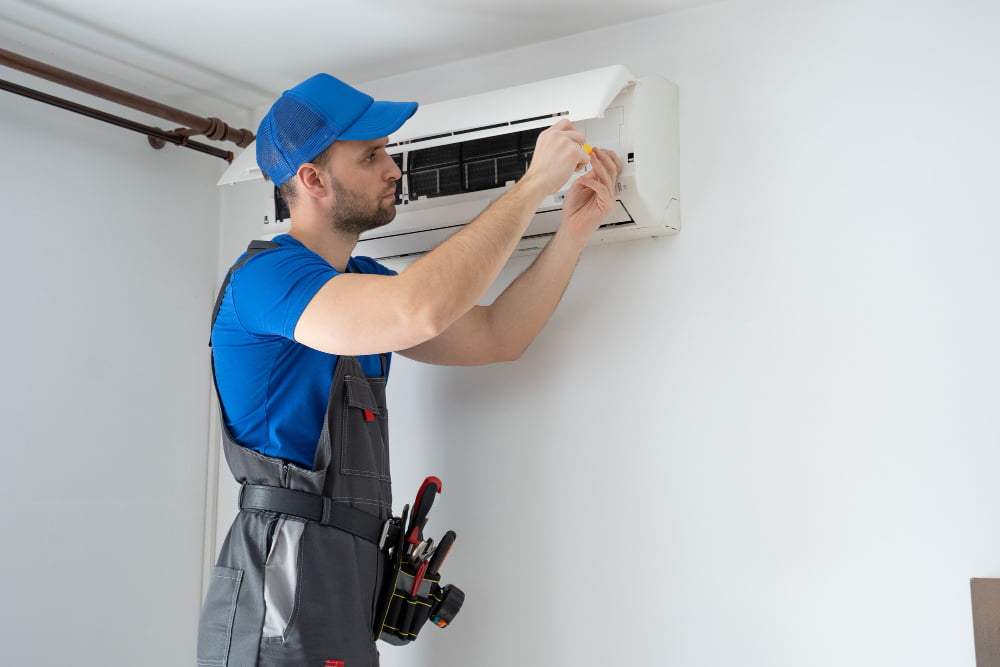In this blog post, discover effective ways to maintain a healthy indoor environment that can help individuals with asthma and allergies breathe better.
As a child, I suffered from severe asthma and allergies. I remember struggling to breathe and constantly sneezing whenever I was indoors.
My parents did everything they could to make our home a safe haven for me, but it wasn’t until we made some changes to our indoor environment that my symptoms improved drastically.
Now as an expert blogger on home air quality, my mission is to help others who may be experiencing similar issues. If you or someone you love suffers from asthma or allergies, it’s crucial to maintain a healthy indoor environment.
In this article, I’ll share some tips on how to do just that so you can breathe easy and enjoy your home without worrying about your health.
Identifying Asthma & Allergy Triggers

As someone who has lived with asthma and allergies, I know firsthand how important it is to identify triggers that can worsen symptoms. Common indoor allergens include dust mites, pet dander, mold spores, and pollen brought in from outside.
These allergens can be found in carpets, bedding materials like pillows and comforters as well as curtains.
To reduce exposure to these triggers you should consider using hypoallergenic bedding materials such as pillowcases or mattress covers made of tightly woven fabrics that prevent the accumulation of dust mites. You may also want to invest in an air purifier with a HEPA filter which will help remove airborne particles like pet dander or pollen from the air.
Another way to minimize exposure is by keeping your home clean through regular vacuuming (using a vacuum cleaner equipped with HEPA filters), washing beddings frequently at high temperatures (above 130°F) which kills off any dust mites present on them.
By identifying potential asthma and allergy triggers within your home environment you’ll be able to take proactive steps towards reducing their impact on your health while creating a healthy living space for yourself or loved ones who suffer from these conditions.
Air Purifiers: A Breath of Fresh Air

One of the most effective ways to improve indoor air quality is by using an air purifier. When I was a child, my parents invested in an air purifier for our home and it made a world of difference for my asthma and allergies.
Air purifiers work by filtering out pollutants such as dust, pollen, pet dander, and mold spores from the air.
There are many different types of air purifiers on the market today with varying levels of filtration capabilities. Some use HEPA filters which can capture particles as small as 0.3 microns while others use activated carbon filters to remove odors from the air.
When choosing an air purifier for your home, consider factors such as room size and filter replacement costs. It’s also important to note that while they can be helpful in reducing allergens in your home environment; they should not replace other measures like regular cleaning or avoiding triggers altogether.
Investing in an efficient high-quality unit will help ensure you’re breathing clean fresh indoor-air all year round!
The Power of Proper Ventilation

One of the most important factors in maintaining a healthy indoor environment for individuals with asthma and allergies is proper ventilation. When I was growing up, my parents made sure to keep our windows open as much as possible to allow fresh air into our home.
This helped reduce the amount of allergens and pollutants that were trapped inside.
Nowadays, there are many different types of ventilation systems available that can help improve indoor air quality even further. For example, an energy recovery ventilator (ERV) can bring in fresh outdoor air while also removing stale indoor air without losing too much heat or coolness from your HVAC system.
Another option is a whole-house fan which pulls hot or stuffy air out through attic vents while drawing cooler outside air indoors through open windows or doors. This type of system works best during mild weather conditions when it’s not too hot or cold outside.
Proper ventilation not only helps reduce allergens and pollutants but also helps regulate humidity levels which can be beneficial for those with respiratory issues like asthma. By investing in a good ventilation system, you’ll be able to breathe easier knowing that your home is providing you with clean and healthy indoor air quality all year round!
Humidity Control: Finding Balance

One of the most important factors in maintaining a healthy indoor environment for individuals with asthma and allergies is humidity control. As someone who has struggled with these conditions, I know firsthand how much of an impact humidity levels can have on our respiratory health.
When I was younger, my parents invested in a dehumidifier to help reduce the moisture levels in our home. While it did improve my symptoms, we soon realized that too little humidity could also be problematic.
Dry air can irritate nasal passages and make breathing more difficult.
Finding balance is key when it comes to controlling indoor humidity levels. Ideally, you want to aim for a relative humidity level between 30-50%.
This range helps prevent mold growth while still providing enough moisture to keep your respiratory system comfortable.
Investing in a hygrometer (a device used for measuring relative humidity) can help you monitor your home’s moisture levels and adjust accordingly using either humidifiers or dehumidifiers as needed.
By finding the right balance of indoor air moisture content through proper ventilation techniques such as opening windows during dry weather or running exhaust fans after showering/bathing; investing in quality HVAC systems that regulate temperature/humidity automatically; using natural remedies like plants which absorb excess water from surrounding areas – all these steps will go far towards creating an optimal living space free from allergens!
Dust Mite Dilemma: Tackling Bedding

One of the biggest culprits for triggering asthma and allergies is dust mites. These tiny creatures thrive in warm, humid environments like our bedsheets, pillows, and mattresses.
As someone who has struggled with asthma and allergies myself, I know firsthand how important it is to tackle this dust mite dilemma.
When I was a child, my parents invested in hypoallergenic bedding that was specifically designed to repel dust mites. This made a huge difference in my symptoms as it reduced the amount of allergens present in my sleeping environment.
If you or your loved one suffers from asthma or allergies, consider investing in hypoallergenic bedding such as pillowcases and mattress covers that are specially designed to keep out these pesky critters. Washing your sheets regularly at high temperatures can also help eliminate any existing dust mites.
By taking these simple steps towards maintaining a healthy indoor environment free from allergens like dust mites can make all the difference for individuals with respiratory issues like myself!
Pet Allergens: Coexisting With Furry Friends

- As much as I loved animals, my parents were hesitant to let me have a pet because of my allergies. But when I was 10 years old, we adopted a fluffy white cat named Snowball. To our surprise, my symptoms didn’t worsen with her around.
- However, not everyone is as lucky as I was when it comes to coexisting with furry friends. Pet allergens can trigger asthma and allergy symptoms in some individuals and make their indoor environment unhealthy.
- If you’re an animal lover but also suffer from asthma or allergies, there are steps you can take to minimize the impact of pet allergens on your health while still enjoying the company of your furry friend:
- Keep pets out of bedrooms and other areas where you spend most of your time
- Bathe pets regularly (with veterinarian-approved products) to reduce dander buildup
- Use air purifiers with HEPA filters that capture pet hair and dander particles from the air
- By taking these precautions along with maintaining good indoor air quality practices such as regular cleaning and ventilation systems maintenance will help create a healthy home for both humans & their beloved pets!
Clean Floors, Clear Airways

One of the most important steps in maintaining a healthy indoor environment for individuals with asthma and allergies is to keep your floors clean. As someone who suffered from severe allergies as a child, I know firsthand how much dust and allergens can accumulate on carpets and rugs.
That’s why my parents made sure to vacuum our home regularly using a high-efficiency particulate air (HEPA) filter.
But it’s not just about vacuuming – you also need to make sure that your floors are free of clutter. This means removing any unnecessary items like toys or books that can collect dust, especially if they’re left on the floor for extended periods.
If you have pets, it’s even more crucial to keep your floors clean since pet dander is one of the most common triggers for allergy symptoms. Consider investing in hard flooring surfaces like hardwood or tile instead of carpeting if possible since these materials are easier to clean thoroughly.
By keeping your floors clear and cleaning them regularly with HEPA filters, you’ll be able to breathe easier knowing that there are fewer allergens lurking around every corner!
Green Cleaning for Healthier Homes

One of the most effective ways to maintain a healthy indoor environment is through green cleaning. As someone who has struggled with asthma and allergies, I know firsthand how harsh chemicals in traditional cleaning products can exacerbate symptoms.
That’s why switching to natural, non-toxic cleaners can make a world of difference.
When my parents made the switch to green cleaning products, it was like a breath of fresh air for me (literally!). We started using vinegar and baking soda for general household cleaning instead of chemical-laden sprays and wipes.
Not only did this help improve my health, but it also reduced our environmental impact.
Nowadays there are many eco-friendly options available on the market that are just as effective as their conventional counterparts. Look for labels such as “non-toxic”, “biodegradable” or “plant-based”.
You could even try making your own cleaners at home using simple ingredients like lemon juice or castile soap.
By choosing greener alternatives when it comes to household chores you’ll not only be doing your part in protecting yourself from harmful toxins but also contributing towards creating healthier homes overall!
Regular HVAC Maintenance Matters

One of the most important steps in maintaining a healthy indoor environment is to ensure that your HVAC system is functioning properly. As someone who has struggled with asthma and allergies, I know firsthand how much of an impact poor air quality can have on our health.
That’s why it’s crucial to schedule regular maintenance for your heating and cooling systems.
Over time, dust, dirt, and other allergens can accumulate in your HVAC system. If left unchecked, these particles will circulate throughout your home every time you turn on the heat or AC – exacerbating symptoms for those with asthma or allergies.
Regular maintenance by a professional technician includes cleaning out any debris from ducts and filters as well as checking for any leaks or malfunctions that could be affecting air quality. By keeping up with this routine service at least once per year (or more frequently if recommended by the manufacturer), you’ll not only improve indoor air quality but also extend the lifespan of your equipment.
In short: don’t neglect regular HVAC maintenance! It matters more than you might think when it comes to creating a healthy living space for yourself or loved ones dealing with respiratory issues like asthma or allergies.
Read Also
- How Does Indoor Air Quality Affect Allergies and Asthma?
- How Does Humidity Affect Indoor Air Quality?
- The Effects of Poor Indoor Air Quality On Children, the Elderly, and Individuals With Respiratory Issues
- How to Reduce Allergens in Your Home’s Air
- The Importance of Regular HVAC Maintenance for Maintaining Good Indoor Air Quality